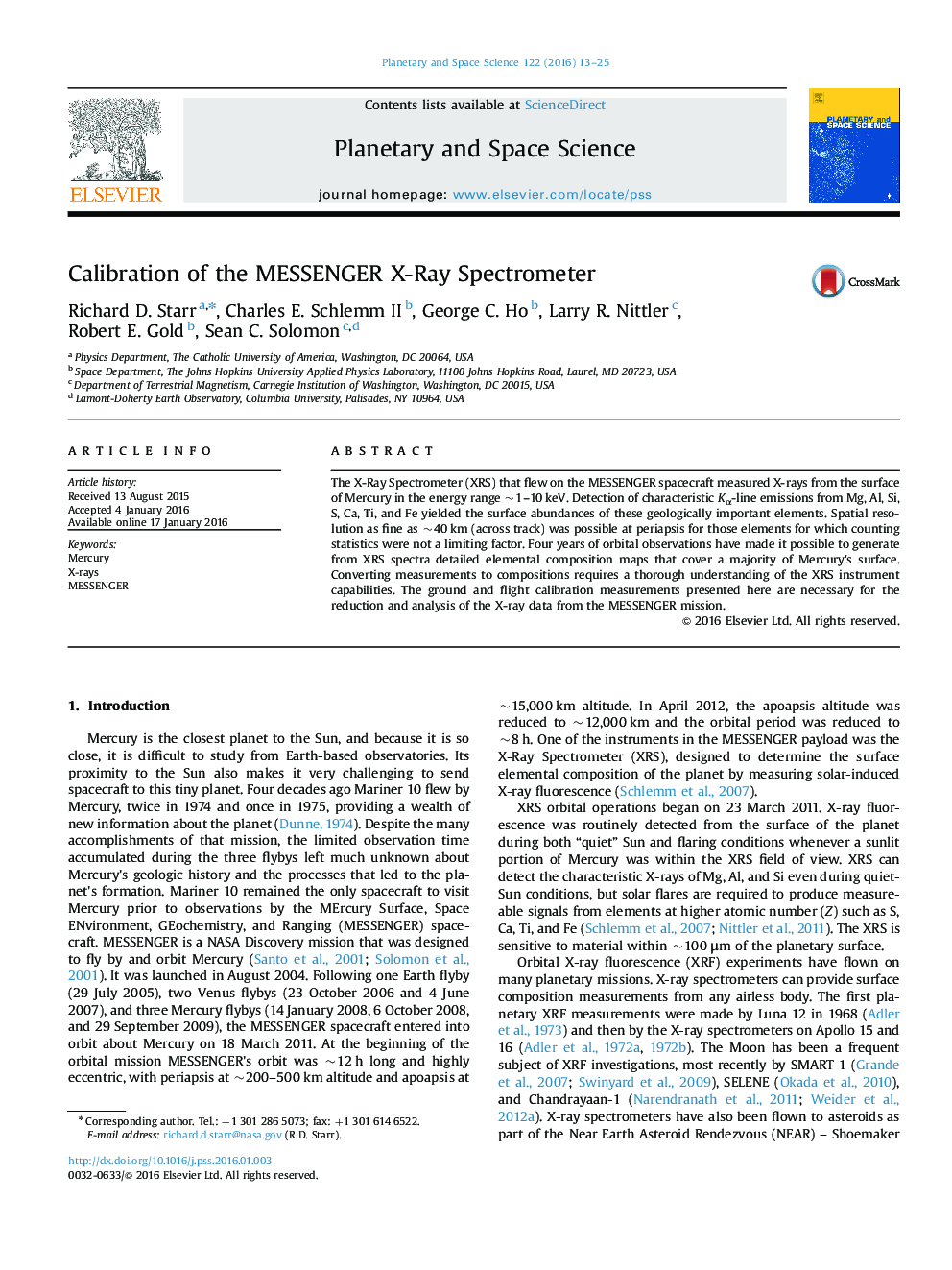| Article ID | Journal | Published Year | Pages | File Type |
|---|---|---|---|---|
| 1780865 | Planetary and Space Science | 2016 | 13 Pages |
Abstract
The X-Ray Spectrometer (XRS) that flew on the MESSENGER spacecraft measured X-rays from the surface of Mercury in the energy range ~1-10 keV. Detection of characteristic Kα-line emissions from Mg, Al, Si, S, Ca, Ti, and Fe yielded the surface abundances of these geologically important elements. Spatial resolution as fine as ~40 km (across track) was possible at periapsis for those elements for which counting statistics were not a limiting factor. Four years of orbital observations have made it possible to generate from XRS spectra detailed elemental composition maps that cover a majority of Mercury׳s surface. Converting measurements to compositions requires a thorough understanding of the XRS instrument capabilities. The ground and flight calibration measurements presented here are necessary for the reduction and analysis of the X-ray data from the MESSENGER mission.
Related Topics
Physical Sciences and Engineering
Earth and Planetary Sciences
Geophysics
Authors
Richard D. Starr, Charles E. Schlemm II, George C. Ho, Larry R. Nittler, Robert E. Gold, Sean C. Solomon,
